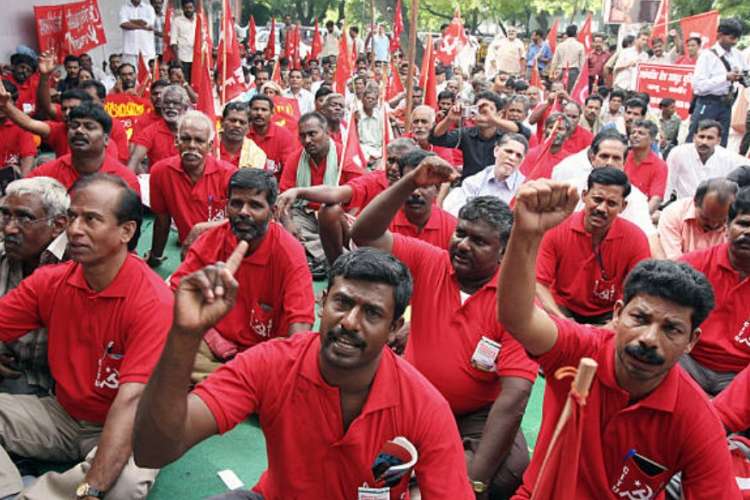Five years after Parliament approved the four labour codes, India still cannot say when they will take effect. The centrepiece of Prime Minister Narendra Modi’s 2020 reform push was supposed to sweep away a thicket of more than 30 overlapping laws and replace them with a cleaner, four-pillar framework covering wages, industrial relations, social security and workplace safety. Yet the codes remain in bureaucratic limbo, their promise of simpler compliance for firms and stronger protection for workers still on hold.
New Delhi blames the delay on the states, which must amend their own statutes before the Centre can notify the codes. It has urged every state and Union Territory to align local laws with the new regime in the name of “ease of doing business”. Labour unions, however, see a different motive: they fear the reforms will tilt the balance of power further towards employers and erode hard-won rights.
READ | Blue economy: Mangroves, coral reefs key to India’s economic ambitions
Why unions are on the streets
The Joint Platform of Central Trade Unions—10 national bodies, save for the RSS-aligned Bharatiya Mazdoor Sangh—has twice postponed a nationwide strike and now plans fresh protests on July 9. Their grievance is procedural as well as substantive. The government hurried the bills through Parliament without the constitutionally mandated tripartite consultation with unions and employers, a dialogue recommended by the International Labour Organisation and once routine in India until it stopped abruptly in 2014.
Substance matters even more. Critics note that the codes raise the threshold at which factories need official approval for layoffs or closure—from 100 to 300 workers—giving management greater flexibility at the cost of job security. They also fear that a 12-hour shift provision, though nominally voluntary and compensated, could normalise longer workdays and blunt the eight-hour norm championed by BR Ambedkar.
The promise: universal coverage
On paper, the reforms are modern and socially ambitious. They define “employee” broadly enough to cover contract, gig and platform workers—an overdue nod to India’s changing labour market. They pledge social-security benefits, from disability cover to old-age pensions, to the vast unorganised sector. And they promise a single national minimum wage that will finally give the working poor a baseline income.
Yet these gains exclude millions. Domestic staff and farm hands—together with many construction workers—sit outside the Occupational Safety, Health and Working Conditions Code, even though the construction industry is among the most hazardous. India thus risks violating ILO Convention 161, which calls for occupational-health protection for all workers.
States race to the bottom
Under pressure to woo investors, at least 20 states have already pre-empted the codes by raising thresholds on retrenchment, closure and factory registration. Nineteen have doubled the headcount at which the Factories Act applies; most have eased the Contract Labour Act; and 31 now allow women on night shifts. The cumulative effect is a permissive climate for industry—but one that deepens labour’s mistrust.
The argument that higher statutory wages will accelerate automation and cost jobs no longer convinces. Digitisation is advancing regardless of pay levels, and stagnant household incomes are strangling domestic demand. As the International Labour Organisation points out, fair wages are a macro-economic necessity: they reduce poverty, curb inequality and, crucially for India Inc, expand the consumer base.
What must change
Tripartite dialogue needs to be restored urgently. Reconvening the Indian Labour Conference and engaging unions and employers in genuine negotiations would give the reforms the legitimacy they currently lack. Beyond process, the government must widen the safety net. A separate statute—or an expanded safety code—should extend unequivocal protection to domestic workers, farm labourers and others at the precarious edge of the economy.
Moving from a statutory floor wage to region-specific living wages, indexed to inflation, would show seriousness about lifting purchasing power rather than paying lip service to it. Such a policy shift must be backed by a credible enforcement architecture. Well-funded labour inspectorates, insulated from rent-seeking and political interference, would go a long way towards upholding safety and wage norms.
Equally important is a phased rollout that recognises firms’ capacity constraints. Smaller enterprises will need time—and perhaps tax breaks or compliance credits—to install modern payroll systems, upgrade workplace safety and train managers. A staged introduction would allow regulators to iron out teething troubles without derailing production.
Finally, the reforms will wither without trust on the factory floor. Transparent grievance-redress mechanisms and mandatory worker representation—whether through unions or works councils—can help build that trust, ensuring that flexibility for employers does not translate into precarity for employees.
Labour codes: A reform worth rescuing
The new labour architecture is not fatally flawed; it is simply unfinished. Its drafters recognised India’s need to integrate a youthful, mobile workforce into formal, secure and productive employment. But without genuine social dialogue and iron-clad safeguards, the codes risk entrenching a two-tier labour market: flexible and protected at the top, precarious at the base.
India aspires to become a manufacturing powerhouse and a five-trillion-dollar economy. That ambition will ring hollow if the shop-floor reality is Dickensian. A transparent, worker-friendly rollout of the labour codes could still deliver the twin dividends of investment and inclusion. The government must grasp that opportunity before reform fatigue hardens into public cynicism—and before the workers it seeks to empower turn their backs on a project that began with such promise.

